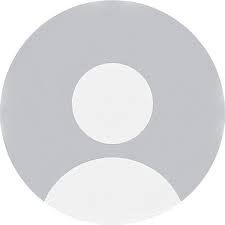
Product design IPR involved and implication
Product Design and Intellectual Property Rights (IPR) play a significant role in safeguarding the creativity and commercial potential of innovative designs. The protection of product design through IPR ensures that the creator or manufacturer retains exclusive rights to their unique design, preventing others from copying or imitating it without permission. Below is an overview of the types of IPR involved in protecting product designs and the implications of such protections:
Types of IPR Involved in Product Design Protection
- Industrial Design Protection
- Definition: An industrial design refers to the ornamental or aesthetic aspect of a product. It covers the shape, pattern, color, and any combination of these elements that give the product a unique and attractive appearance. This type of design protection focuses purely on the aesthetic appeal and not on the functional aspects of the product.
- Legal Protection: Under the Design Act, 2000 (India), industrial designs are protected by registering them with the appropriate Intellectual Property Office. A registered design gives the creator the exclusive right to use the design and prevent others from copying or imitating it.
- Implications:
- Exclusive Rights: The owner of a registered design has the right to stop others from producing or selling articles that bear the same or substantially similar design.
- Limited Duration: In most jurisdictions, the protection for industrial designs lasts for a limited period, typically 10 years, with the possibility of renewal for an additional term.
- Market Advantage: Product designs often play a key role in attracting consumers, and protecting them enhances the brand’s marketability and competitive edge.
- Infringement Protection: If someone infringes on the registered design, the owner can take legal action, including seeking an injunction, damages, or a claim for the destruction of counterfeit goods.
- Patent Protection
- Definition: While patents primarily protect inventions related to new and innovative products or processes, in some cases, a product's design may also qualify for patent protection if it includes functional aspects or technical innovation.
- Legal Protection: A utility patent can be granted for new inventions or discoveries that are useful, novel, and non-obvious. In certain cases, product designs with a novel technical feature (e.g., a new mechanism or structure) may also be eligible for patent protection.
- Implications:
- Patent Monopoly: Patent protection provides the inventor with exclusive rights to use, make, sell, and license the invention for a specific period, typically 20 years.
- Increased Value: Product designs that are technically innovative can gain significant market value due to the monopoly granted by patents.
- Complexity: Obtaining a patent for a design can be more complex and expensive compared to design registration, especially if the design is more functional than ornamental.
- Trademarks
- Definition: Trademarks can also protect distinctive elements of a product’s design if they serve as a source identifier. For instance, a product's logo, shape, or color can be trademarked if they are distinct enough to represent the brand.
- Legal Protection: Under trademark law, a shape mark (e.g., the unique shape of a bottle or packaging) can be registered as a trademark if it’s distinctive and non-functional. Color marks and 3D marks are also types of design-related trademarks.
- Implications:
- Brand Recognition: Trademarks protect the brand’s identity, and a product design that serves as a trademark can enhance brand recognition and loyalty.
- Exclusive Use: The trademark owner can prevent others from using a similar design or shape that may cause confusion in the marketplace.
- Limited Scope: Trademark protection is typically more focused on the marketing and commercial use of the design rather than the aesthetic or technical design itself.
- Copyright
- Definition: Copyright protection may also be applicable to product designs that involve artistic elements. For example, graphical or artistic works associated with the design (like illustrations, sketches, or other visual representations of the design) may be protected by copyright.
- Legal Protection: Copyright automatically protects original works of authorship, and in many countries, there is no need to register the work for copyright protection to apply. However, registering the design can strengthen the legal standing in case of disputes.
- Implications:
- Automatic Protection: Copyright is automatic upon creation of the work and does not require formal registration in some jurisdictions, although registering provides additional legal benefits.
- Limited Scope: Copyright does not protect functional aspects or the general shape of a product. It protects only the artistic or creative expressions associated with the product design.
- Duration: Copyright protection typically lasts for the creator’s lifetime plus 50–70 years, depending on the jurisdiction.
- Trade Secrets
- Definition: If the design involves confidential or proprietary processes or methods (such as a unique manufacturing process), trade secret protection may apply. Trade secrets can include formulas, methods, designs, or other processes that provide a competitive advantage.
- Legal Protection: Trade secrets are protected through non-disclosure agreements (NDAs), confidentiality clauses, and other legal measures to prevent unauthorized use or disclosure.
- Implications:
- No Expiry: Trade secret protection lasts as long as the information remains confidential.
- Limited to Confidentiality: Protection is dependent on keeping the information secret. If the secret is disclosed or becomes public, protection is lost.
- Competitive Advantage: Protecting unique manufacturing methods or design processes can maintain a competitive advantage in the market.
Implications of Product Design IPR
- Commercial Value and Competitive Advantage
- Protecting product designs ensures that companies retain control over the use and commercialization of their designs. It prevents others from copying the product and undermining its market position.
- A strong IP portfolio, including design protection, adds value to the business and may even increase investment potential for startups and established companies.
- Preventing Copycat Products
- Without proper IP protection, competitors can replicate innovative designs, leading to market dilution and loss of consumer loyalty. By protecting the design, a business can stop counterfeiters and imitators, safeguarding brand reputation.
- Licensing and Revenue Generation
- Product design IPR can be licensed to other companies, providing a potential revenue stream. This is particularly useful in industries such as fashion, electronics, and automotive, where design innovation can be highly profitable.
- Branding and Market Differentiation
- A well-protected product design can serve as a tool for branding, offering consumers a visual or functional cue that distinguishes the product from competitors. This is especially true when the design is unique and associated with the quality or functionality of the brand.
- Enforcement and Legal Remedies
- Having registered IPR allows businesses to take legal action if their designs are infringed. Enforcement can lead to remedies such as:
- Injunctions: Preventing the infringement from continuing.
- Damages: Financial compensation for the infringement.
- Destruction of Counterfeit Goods: In cases of manufacturing counterfeit products.
- Having registered IPR allows businesses to take legal action if their designs are infringed. Enforcement can lead to remedies such as:
- Global Protection
- Product design IPR can be protected internationally through systems like the Hague Agreement for industrial designs, which allows for registration in multiple countries through a single application.
- For trademarks, protection can be extended globally through the Madrid Protocol, ensuring that the brand's design is safeguarded across different markets.
Challenges and Considerations
- Functional vs. Aesthetic Design
- The protection of functional aspects of a product design can be challenging since patent law (rather than industrial design law) generally protects functional features. Designers must ensure they differentiate aesthetic and functional elements when seeking protection.
- Limited Duration
- Protection for industrial designs typically has a limited duration (usually 10 years), after which the design can enter the public domain and be copied by others. Regular renewals and updates may be required to maintain the protection.
- Design Infringement Risk
- In the global marketplace, products are frequently copied or imitated in low-cost regions. Therefore, businesses must actively monitor the market for possible infringements, especially when selling internationally.
Conclusion
Protecting product designs through IPR is essential for maintaining a competitive edge in the market, ensuring exclusivity, and generating revenue. Whether through industrial design protection, patents, trademarks, copyrights, or trade secrets, businesses must strategically choose the most appropriate form of protection based on the nature of their design. By securing their designs, companies can maximize the value of their intellectual property, safeguard their market position, and create a sustainable competitive advantage.



